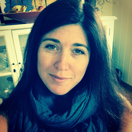
Manuscript Forgeries, Digital Imaging, and Critical Provenance Research (RCN FRIPRO Toppforsk 2019–2024)
The forgery of more than 70 so-called post-2002 Dead Sea Scrolls fragments, and the subsequent publishing of a majority of these, disclosed a fundamental crisis in the field of Dead Sea Scrolls and Qumran studies. The fragments were promoted by leading scholars; they were published by some of the most reputable experts in the field; many of the fragments allegedly “survived” advanced physical testing and were authenticated by renowned palaeographers. In other words, none of the major tools in the manuscript expert’s tool box worked, at least not at the outset. The fragments became (and still remain) part of the famous Dead Sea Scrolls dataset, even though they are undocumented, unprovenanced, and forged. Traditionally, critical provenance research has been neglected in Qumran studies. Interest in, and reflection on, provenance has been scarce.
“The Lying Pen of Scribes” represents a new interdisciplinary and holistic approach to the Dead Sea Scrolls and seeks to create a more comprehensive dataset. The project is guided by the following overarching questions: (1) What critical insights can be gained from the post-2002 Dead Sea Scrolls scandal, and how can these contribute to change Qumran studies and manuscript studies at large? (2) How do collectors, museums, antiquities dealers, and scholars “authenticate” unprovenanced manuscripts and inscriptions? (3) How is provenance constructed, how do narratives of manuscript finds continue to evolve, and how can information about asserted provenance (origin, acquisition, ownership history) be decoded? The main objective of the project is to produce a comprehensive resource of data, methods, and procedures for the interdisciplinary analysis of Dead Sea Scrolls manuscripts and fragments through a combination of physical analyses, digital imaging, machine learning, study of scribal practices, critical provenance research, and an exploration of media that shaped the narratives about the world’s most famous manuscript find.
























